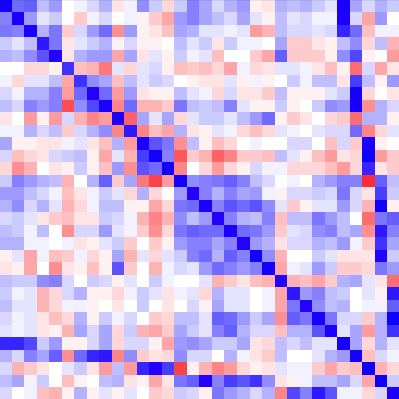
-
Learn more about...
- Frequently Asked Questions
- Personality: TAI
- Temperament
- Ability
- Interests
- Recent Blog Posts
- Myers-Briggs Type Indicator® (MBTI®)
- Creativity
- Parsimony in Personality
- Code Sharing: scienceCareers
- Presidential Candidacy and Personality
- Eysenck Personality Questionnaire® (EPQ)
- The HEXACO Model
- The RIASEC Model
- The CHC Model
- The NEO-PI-R
- see more...
The history of the RIASEC Occupational Interests framework dates back to a series of influential papers about vocational preferences by John Holland in the 1950s. His 1959 article in the Journal of Counseling Psychology
“The present theory assumes that at the time of vocational choice the person is the product of the interaction of his particular heredity with a variety of cultural and personal forces including peers, parents and significant adults, his social class, American culture, and the physical environment. Out of this experience, the person develops a hierarchy of habitual or preferred methods for dealing with environmental tasks. From an ecological standpoint, these habitual methods are associated with different kinds of physical and social environments, and with differential patterns of abilities. The person making a vocational choice in a sense ‘searches’ for situations which satisfy his hierarchy of adjustive orientations.” (Holland, 1959, p. 35)
In this same publication, Holland identified six categories for classifying occupations and person-level “orientations” (these were originally named motoric, intellectual, esthetic, supportive, conforming, and persuasive). Over the ensuing decades, Holland developed his theory into a more clearly articulated model for vocational counseling that remained rooted in the notion that one’s “interests, preferred activities, beliefs, abilities, values, and characteristics” are primary to the identification of a comfortable working environment.
Holland’s model is now often referred to as the RIASEC as this is the acronym produced by his revised names for the six categories of occupations and orientations.
Even today, many of the most widely-used tests and measures in vocational counseling are closely tied to Holland’s RIASEC model, including the Strong Interest Inventory (previously known as the Strong Interest Blank and the Strong-Campbell Interest Inventory), the Vocational Preference Inventory, the Self-Directed Search, the Position Classification Inventory, and the Vocational Decision Making Difficulty scale.
The most prominent manifestation of Holland’s work, however, is its use as an integral component in the Occupational Interest Network (O*NET).
In personality terms, the RIASEC model is generally construed as a dimensional, theory-based model. While the six categories are suggestive of a typological approach, Holland was clear in his views that the types are dimensional. Several researchers have previously reported on the associations between the RIASEC and other personality frameworks. DeFruyt and Mervielde
How much do you know about your own personality? Interested in finding out more? Take the SAPA personality test and see where you fall on the Big Five distributions!
References:
[1] Holland, J. L. (1959). A theory of vocational choice.
[2] Nauta, M. M. (2010). The development, evolution, and status of Holland’s theory of vocational personalities: Reflections and future directions for counseling psychology.
[3] Gottfredson, L. S., & Richards, J. M. (1999). The meaning and measurement of environments in Holland's theory.
[4] Holland, J. L. (1966).
[5] RIASEC theory. (2013). Retrieved December 11, 2016, from http://www.self-directed-search.com/How-does-it-work/three-articles/ArticleId/35/riasec-theory
[6] O*NET OnLine. (n.d.). Retrieved March 15, 2017, from https://www.onetonline.org/
[7] De Fruyt, F., & Mervielde, I. (1997). The five-factor model of personality and Holland's RIASEC interest types.